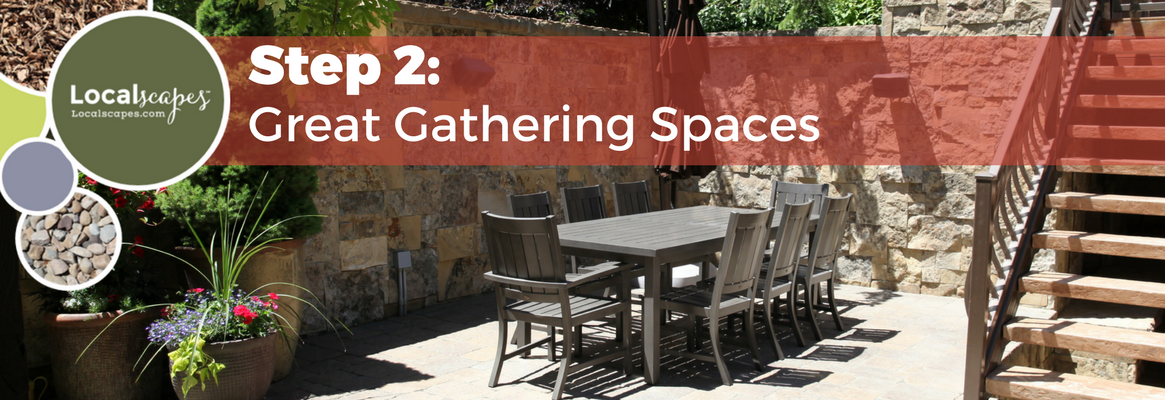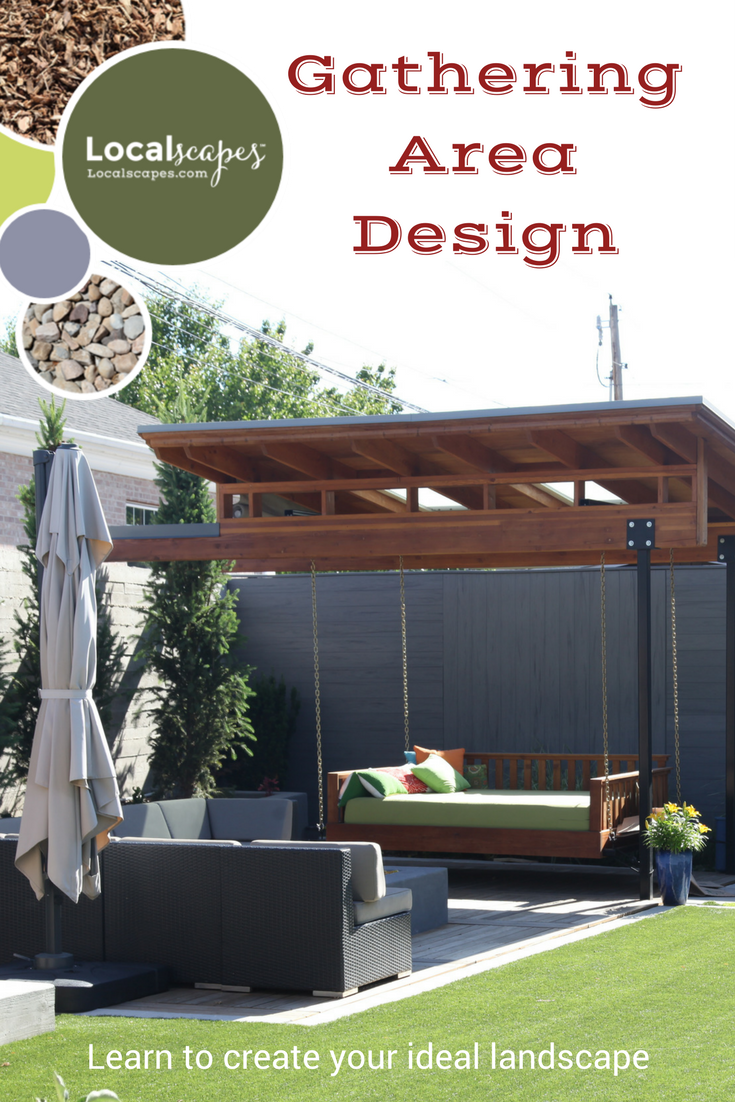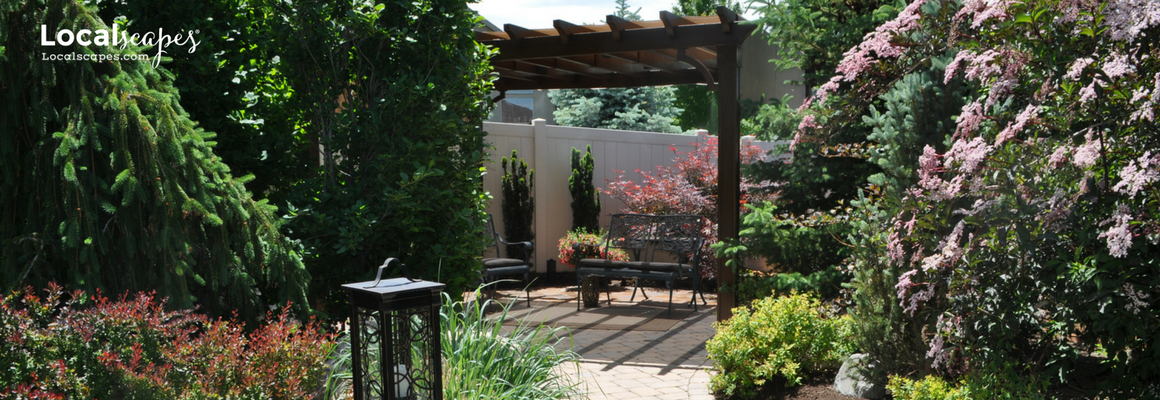
Great Gathering Areas
-

Gathering Areas are functional spaces within a Localscape that are designed for socializing, entertaining, and/or private contemplation. Last week, we learned about the Central Open Shape, the first step in creating a Localscape. Gathering Areas are the second type of space to be considered when designing your yard, and can include patios, decks, gazebos, fire pits, and either covered or uncovered seating areas. As you begin to design Gathering Areas in to your landscape, consider these key components in the planning stage:
-
Sun Exposure
Sun exposure affects where you’ll locate your Gathering Area. If your Gathering Area is going to be used as a sitting area for socializing, you don’t want the sun’s heat creating an uncomfortable environment. If your backyard faces west, either choose a covered design to minimize heat or place your Gathering Area in a shady part of the yard. If you have an existing large tree already in your landscape, a best practice is to use the shade of that existing tree and design your Gathering Area there.
-

-
Of course you can always modify a too-sunny space by adding a shade structure. This can be as simple as an umbrella over a dining area or installing a shade sail over a seating or pool. In some cases, it may involve the installation of permanent structures. When planning a shade structure, sunlight is an important consideration. Will a simple reduction in sunlight enabled by a vine-covered pergola suffice or will a solid roof be needed to provide protection from the elements? The "right" answer is whichever solution best meets your needs and budget.
-
Privacy
If you want to create a more private Gathering Area, consider a back corner of the landscape or an area that is away from your house and the neighbor’s house. You can also create privacy by planting tall shrubs around the Gathering Area to create a barrier from the rest of the landscape. The example below uses both of these techniques to create a private hideaway.
Don't limit potential Gathering Area locations to just the backyard. Some side yards may offer an excellent opportunity for a hammock or small eating area that's well away from the activity of the major spaces. -

-
Usage
Consider the times of day that you will be using the Gathering Area. Will it be at night? If it’s a fire pit, you will want it in an open area that isn’t directly under a tree so you can gaze at the stars and have plenty of relief from smoke. If you plan to use it in the morning hours to read or sit peacefully, you may want to design it in to a space on the east side of your landscape so you can utilize the morning light. If your plan is to create a space that is an extension of the house or as an outdoor kitchen then you will want to design it close to the house and an entrance so you can access the kitchen easily. If you intend to use the space after dark, consider adding landscape lighting or overhead string lights to extend the hours of enjoyable use.
-

-
BudgetBudget is a consideration for all of us but there are plenty of ways to create quality, budget-friendly Gathering Areas. Loose materials like gravel are do-it-yourself and budget-friendly. Those with more to spend may choose more permanent surfacing that may require professional installation. Just make sure you’re using the right product for the intended use of the space. For example, chairs which slide in and out around a table don’t work well on gravel. It is best to talk to professionals about different material ideas but here are a few: flagstone; flagstone chips; all varieties of concrete: stained, stamped, etc.; brick; pavers; aggregate; gravel; wood; and so on.
-
Gathering Area design is a fun process that allows you to analyze what you can incorporate into your landscape to provide functionality, beauty, and entertainment. To learn how to add these spaces to your own landscape, check out our Localscapes landscape classes. Classes are available here at the Conservation Garden Park and other sites across Utah. To learn more, visit our Localscapes site.
-


